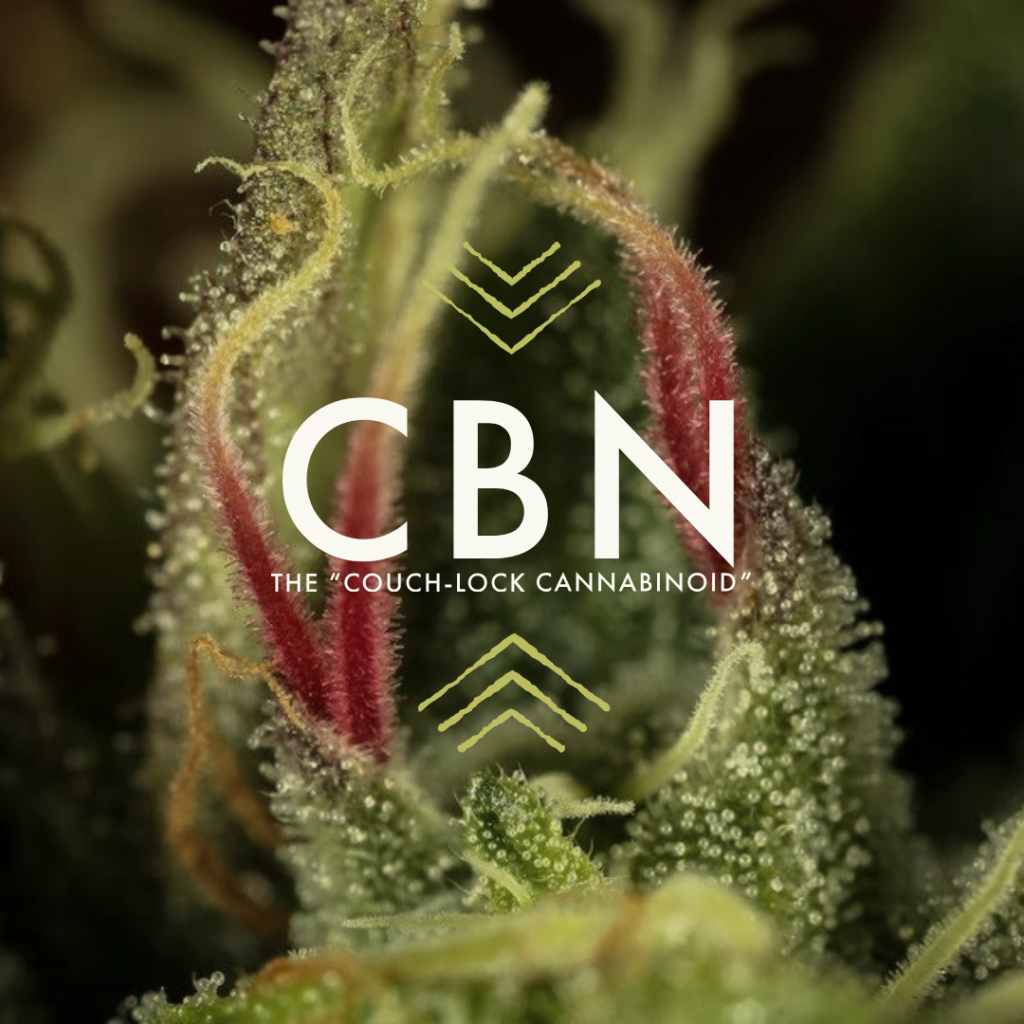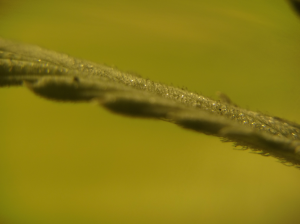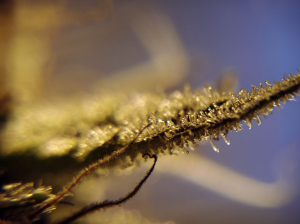What is CBN and what does it do?

A beginner's guide to Cannabinol
Often referred to as “The Couchlock Cannabinoid”, CBN (cannabinol) is present in all strains of cannabis and does not provide a high on its own. Although there hasn’t been much research on Canabinol’s sedating effects, one human study did look at this question and found that it may be the combination of CBN and THC that cause the sedative effect.
ORIGINS
CBN is the final terpene produced by the cannabis plant and is created as THC degrades over time. For that reason you see the highest levels of CBN in older strains. For many years the best way to find and take advantage of Cannabinol was to seek out old flower, or to buy some new flower and wait. As research has advanced on the benefits of other cannabinoids, products made from rarer strains have been found to be high in this cannabinoid have begun to emerge on the market.
SCIENCE
Research available is limited (as we are just beginning to study this cannabinoid in depth) but did begin in the 1970s! Very few studies show results for the human body, they are often preformed on mice, making the findings mostly theoretical right now. The only human study done was in the 1970s and pertained to its assistance with sleep. Most of what we have learned personally comes from customer feedback. What research does exists suggests possible aid for things like glaucoma, as an antibacterial, neuro-protective, and appetite stimulant. We have provided links to these research studies below so you can learn more.
THE COUCH-LOCK CANNABINOID
That first study in the 1970s led the way for this cannabinoid to become known as the “Couch-lock Cannabinoid”. While the sample group was small, none of the respondents reported that cannabinol made them tired.
So why does everyone say that it’s sedating?
“Pure Cannabinol is not particularly sedating,” Dr. Ethan Russo, Cannabis Researcher and Neurologist, “But it is typically found in aged cannabis in which the monoterpenoids have evaporated leaving the more sedating oxygenated sesquiterpenoids. This accounts for the discrepancy.”
In other words, that older weed that is boasting high levels of Cannabinol is also high in sedating terpenes. Researchers believe it is the effect of the terpenes rather than the CBN that creates the relaxing effect we find in aged cannabis. They have also suggested that accompanying it with THC is necessary to receive that sedative effect.
One misconception to be aware of is that not all high CBN products will be non-intoxicating, some are mixed with even balanced ratios of THC. While Cannabinol alone will not produce a high, it can actually increase euphoric effects of delta-9-tetrahydrocannabinol. If you are looking to take advantage of CBN’s benefits without a high, make sure you are using products that don’t contain too much THC!




PRACTICAL USE
Each cannabinoid occurs in different levels within different plants and can interact with each person uniquely depending on the synergy of cannabinoids and terpenes in the plant in combination with how your body produces and reacts to them. Learning about the uses of each cannabinoid can greatly increase your success with using cannabis as a medication. Your budtender can be an excellent tool in helping direct you to the strains and intake methods that are right for you. We do offer CBN Products in our store- you can check out our menu here to see what we have available by using the search feature.
In summary

CBN is created at THC degrades over time (most commonly found in older weed)
Cannabinol does not produce a high on it’s own (much like CBD) but can increase euphoric tendencies of THC.
Studies have shown positive results with Cannabinol as an anticonvulsant, anti-biotic, neuroprotectant, appetite stimulator, and an anti-inflammatory.
Sourcing
Leafly’s, “What is CBN (cannabinol) and what are the benefits of this cannabinoid” https://www.leafly.com/news/science-tech/what-is-cbn-and-what-are-the-benefits-of-this-cannabinoid
Weedmaps, “The Difference between CBN vs CBD” https://weedmaps.com/learn/cbd/cbn-vs-cbd
High Times, “The Ultimate Guide to Cannabinoids in Cannabis” https://hightimes.com/guides/cannabinoids/
Weedmaps, “CBN, Definition” https://weedmaps.com/learn/dictionary/cannabinol-cbn
Science Directs, “CBN” https://www.sciencedirect.com/topics/medicine-and-dentistry/cannabinol
National Library of Medicine, PubMed:
Antibacterial Cannabinoids of Cannabis https://pubmed.ncbi.nlm.nih.gov/18681481/
CBN delays onset of ALS https://pubmed.ncbi.nlm.nih.gov/16183560/
CBN and CBD excerpt opposite effects on rat feeding patterns https://pubmed.ncbi.nlm.nih.gov/22543671/
Cannabinoids in Health & Disease https://www.ncbi.nlm.nih.gov/pmc/articles/PMC3202504/
Cannabinoids, Inflammation & Fibrosis https://faseb.onlinelibrary.wiley.com/doi/full/10.1096/fj.201600646r
Effects of delta9-tetrahydracannabinol and cannabinol in man https://faseb.onlinelibrary.wiley.com/doi/full/10.1096/fj.201600646r


Leave a Comment